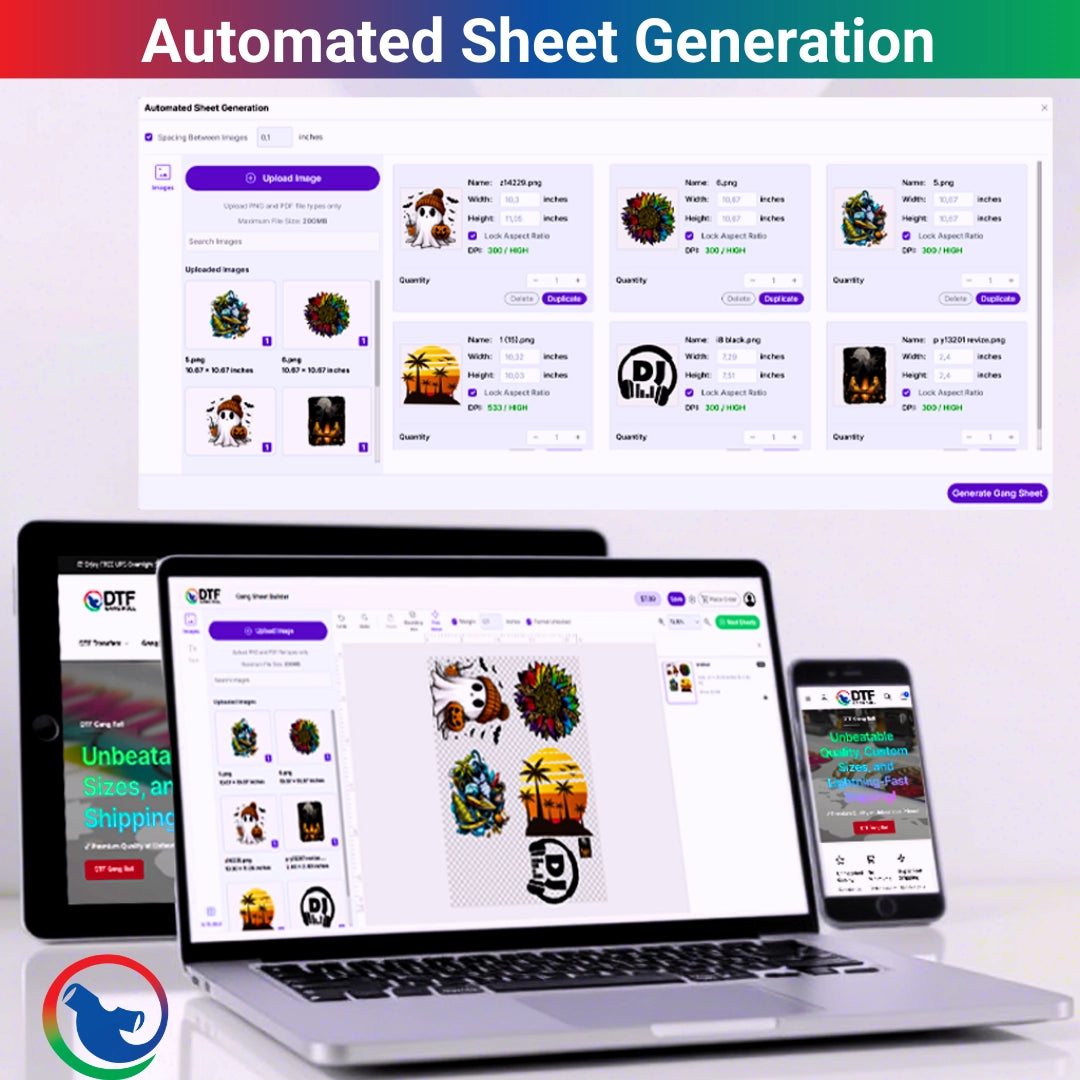Pricing custom apparel can feel like a tightrope walk. Too low, and profits vanish. Too high, and customers vanish. But with a clear custom apparel pricing strategy and costs in view, you can confidently price your custom DTF transfers shirts for both value and margin. Here’s how to build a model that’s profitable, scalable, and sustainable for your brand.
1. Ascertain for you the cost of goods sold (COGS).
Begin with actual numbers:
- Blank garment cost
- DTF printing business costs: DTF transfers, powder, film
- Electricity, labor, packaging, shipping
Total these for accurate dtf printing cost breakdown, your baseline for markups and margins.
2. Determine Your Profit Margin
Common fashion margin: 50 to 60%. Example:
$4 garment + $2 printing = $6 COGS. Sell at $15 gives 60% margin.
That’s how you nail profitable yet competitive how to price custom t-shirts without sacrificing quality or growth.
3. Compare Market and Position
Research similar brands:
- What do fans pay for DTF shirt printing?
- Can you stand higher on sustainability, quality, or personalization?
Set yourself apart and justify your price with your value, not just your cost.
4. Use Tiered & Bundle Pricing
Introduce clever pricing tiers:
- 1 to 9 shirts: $18
- 10 to 49: $15
- 50+: $12
Add bundles like “Buy 3, get 10% off.” This strategy unlocks repeat orders and bulk pricing profits in your pricing strategy for apparel brands.
5. Factor Hidden Costs
Don't forget:
- Returns/refunds
- Payment fees
- Marketing & advertising
These dtf business profit tips ensure every print contributes to your bottom line, not just your headline sales.
6. Price for Your Sales Channel
Adjust strategic pricing per platform:
- High end custom site: $18 to 22
- Marketpop or events: $15 to 18
- Wholesale: $10 to 12
Let your channel, pop up or online, reflect in your pricing per how to price dtf shirts for online store.
7. Monitor & Adapt
Track these daily:
- COGS vs. revenue per shirt
- Returns and customer feedback
- Inventory turns
You’ll refine your pricing as costs fluctuate, whether for film, shipping, or labor. Keep your dtf apparel pricing guide update mail. App business thrives when you're agile.
Conclusion
Custom apparel pricing doesn’t have to be guesswork. Build clearly, understand your costs, establish intelligent custom clothing profit margins, compare yourself to your rivals, strategically package, and keep an eye on your performance at all times. You'll gradually adjust your prices to maintain profitability without compromising credibility.
By employing this tactic, especially with the help and resources offered by DTF Gang Roll, your DTF printing business develops into a successful, long lasting, scalable, intelligent, and genuinely customer focused corporation. By clearly structuring costs and pricing, especially for custom DTF transfers, you can sustain growth while keeping your products attractive and profitable.
Frequently Asked Questions
1. How do I price custom t-shirts profitably?
Add together garment cost, DTF transfer cost, labor, shipping, and fees. Multiply total by 2.5 to 3 to hit 50 to 60% margin.
2. What’s a fair dtf printing cost breakdown?
The average cost per shirt is $4 for the garment, $2 for the transfer, $1 for labor, and $0.50 for packaging, which comes to $7.50.
3. How to build a dtf apparel pricing guide?
List costs, determine target margin, compare market rates, adjust by channel, and update quarterly for cost shifts.
4. Best pricing strategy for apparel brands?
Use tiered pricing discounts, strategic bundles, occasional promos, and channel based pricing to attract different customers.
5. How to price dtf shirts in an online store?
Add shipping and fees to cost, apply standard markup, and test demand. Offer bundle deals to increase average order value.

